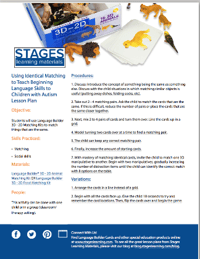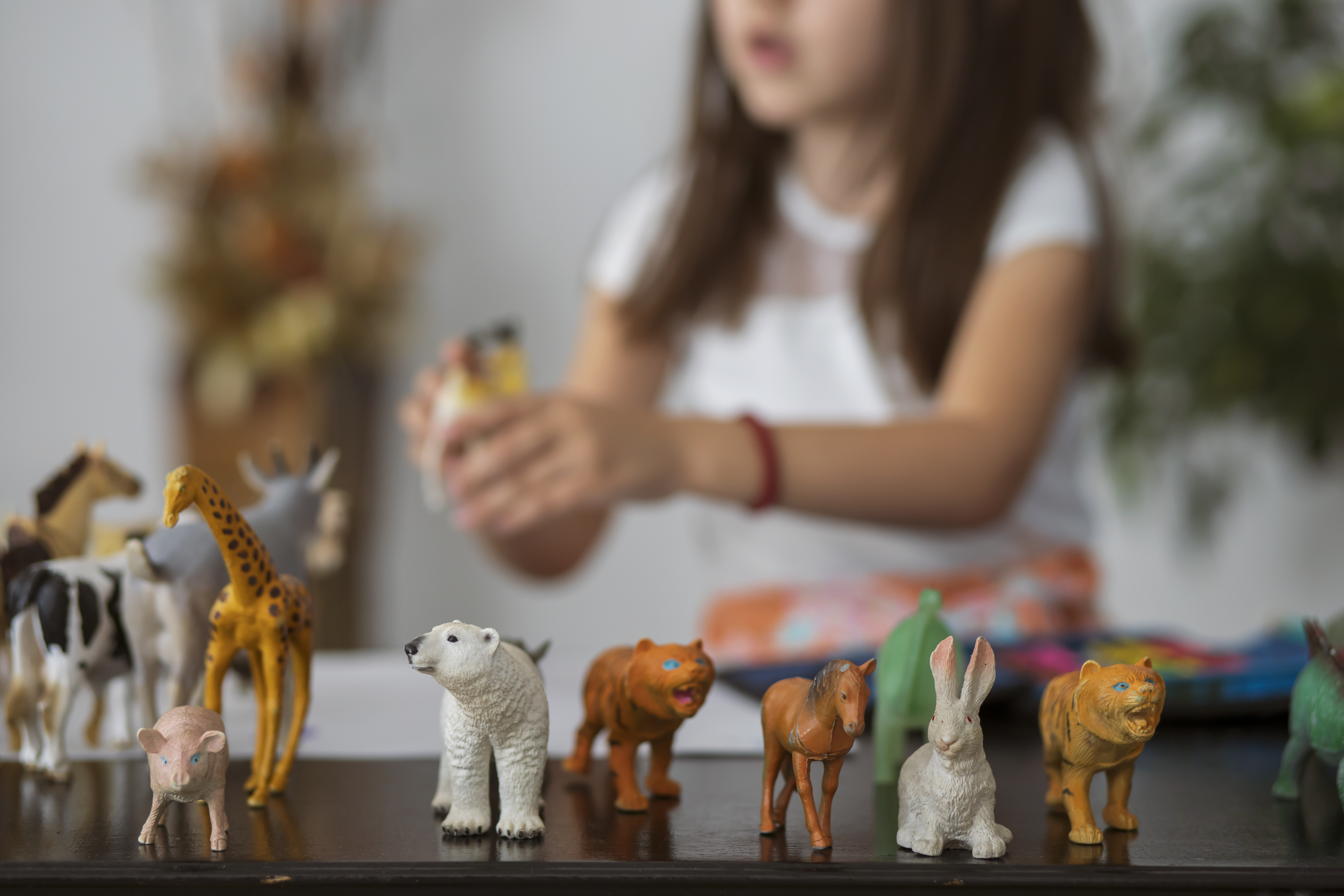Lesson Plan: Using Identical Matching to Teach Beginning Language Skills to Children with Autism
 Download the Matching Cards Lesson Plan
Download the Matching Cards Lesson Plan
Lesson Overview
Students will use Language Builder 3D – 2D Matching Kits to practice matching things that are the same.
Skills Practiced
- Matching
- Social skills
Materials
People
This activity can be done with just one child or in a larger group, in a classroom or therapy setting.
Procedures
- Discuss: Introduce the concept of something being the same as something else. It might help to use practical examples from daily life. For example, you can show the child two identical socks. If age appropriate, discuss with the child other situations in which matching similar objects is useful (putting away cutlery/dishes, folding socks, etc).
- Warm-up: Show the child just one of each animal or food card. Help students identify the names of the different objects they see.
- Take out 2 - 4 matching pairs. Ask the child to match the cards that are the same together. If this is difficult, reduce the number of pairs, or place the cards that are the same closer together.
- Practice this skill until the child is able to correctly match cards when you begin with 6 to 8 pairs.
- Next, mix 2 to 4 pairs of cards and turn them over. Invite the child to help shuffle. Line the cards up in a grid.
- Model how the child can only turn two cards over at a time to find a matching pair.
- The child can keep any correct matching pair. If playing with more than one child, they can score a point for each matching pair.
- When the child is ready, increase the amount of cards. The game is over when all the pairs have been found.
- With mastery of matching identical cards, invite the child to match one 3D manipulative to another. Begin with just two manipulatives, gradually increasing the number of distraction items until the child can identify the correct match with all 8 options on the table.
Variations
- If working with multiple children, this is a great way to encourage collaboration and problem solving. Encourage students to use each other’s names and take turns to flip over the cards.
- Instead of a grid, try arranging the cards randomly or in a line.
- Have the child say the name of each object as they flip the cards over.
- Another way to make the game easier is to begin with all the cards face up. Give the child 10 seconds to try and remember the card locations. Then, flip the cards over and begin the game.
- In a group setting, children can play this game in teams, with two people on each team. One benefit is that they will practice interpersonal and verbal skills while negotiating which card to flip over.







